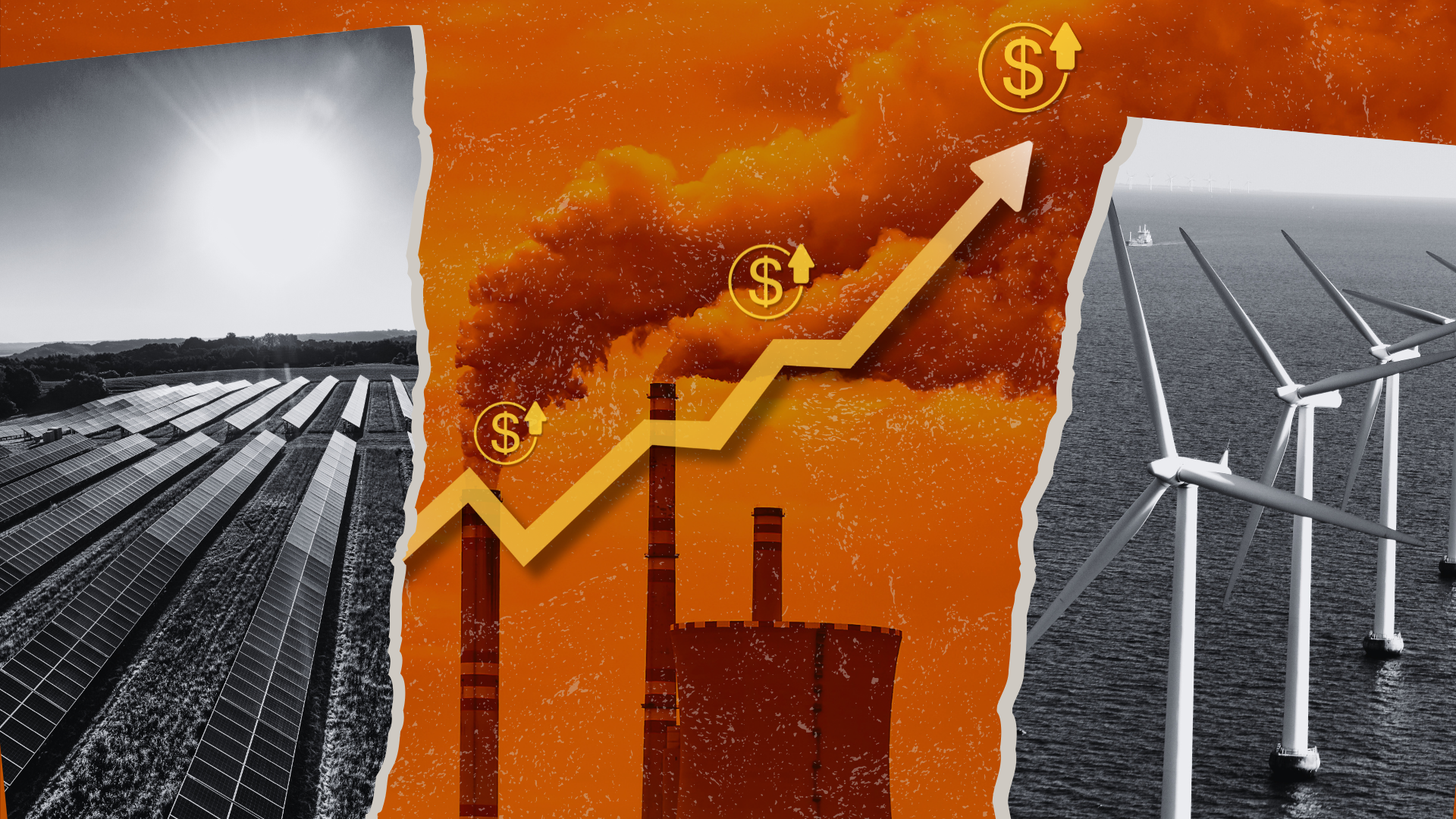Mercury Poisoning from Light Bulbs?
Erica Rowell, today’s guest blogger, is a Web Editor and Producer at Environmental Defense, and our resident expert on compact fluorescents.
Last year, in converting my apartment to energy-saving compact fluorescent lights (CFLs), I broke two. I opened the window, swept up the fragments, wiped the floor with a damp paper towel, put the towel and the broken CFLs in a plastic bag and tied it. My super disposed of the bag. I’m not worried about mercury exposure – they broke a couple of months ago, and my cats and I are fine. A similar incident in Maine was a different story.
When Brandy Bridges shattered a CFL spiral in her daughter’s bedroom, aware that it contained trace amounts of mercury, the concerned mother looked into proper disposal. After a mishmash of good and bad advice, she ended up with a $2,000 clean-up bill and a lot of fear (read full story).
What can we learn from Ms. Bridges? Know some basic facts.
Even though CFLs contain some mercury, they actually reduce overall mercury pollution. How? CFLs require less energy to be generated by power plants, which tend to emit mercury. A CFL eliminates three-fourths of the mercury pollution of a traditional light bulb: 3.3 mg versus 13.6 mg. So using CFLs slashes the amount of mercury we put into our air and surface water. That means less of the toxin ends up in our drinking water and fish.
When disposed of properly, the trace amount of mercury in the bulbs does not threaten the environment. The average CFL contains 4 to 5 mg of mercury – a smidgen compared to other everyday items such as thermometers (500 mg), older thermostats (3,000 mg), and typical office lights (40 mg).
Should a bulb break, take these simple precautions. If a CFL breaks, first open nearby windows to disperse any vapor that may escape. Then sweep it up instead of vacuuming it to minimize vaporizing the mercury (that’s when it becomes toxic). Do not use your hands. Finally, wipe the area with a damp, disposable paper towel to pick up all glass fragments. Place all fragments in a sealed plastic bag and call 1-800-CLEAN-UP or go to earth911.org to find out where to dispose of it.
When a CFL burns out, years down the road, recycle it. Recycling options for CFLs are becoming more common; call your local government or visit earth911.org to see if there’s a drop-off point nearby. As we switch to energy-saving lights, we also need to encourage our communities to provide local recycling facilities. In the meantime, consider buying from stores that already recycle, such as Ikea.
For more information on CFLs and proper disposal, please see the following fact sheets:













11 Comments
A CFL eliminates three-fourths of the mercury pollution of a traditional light bulb: 3.3 mg versus 13.6 mg.
I just finished replacing all my regular light bulbs with compact fluorescents lights. I was worried about the mercury.
Here’s a short critique of the bogus argument that there will be a reduction in toxic mercury into the environment with CFL’s due to the energy reduction from coal plants: (1) The EPA figures are incorrect for several reasons. The basic one is that they assume 100% of electricity in the US is from coal plants. Not true. 50% of electricity does not come from coal plants in the US and coal plants are now mandated to reduce their mercury emissions by between 70% and 90% in the next several years.
(2) Places like California produce little energy from coal plants, so CFL energy reductions will not cut much mercury there.
(3) The 5mg of mercury generally claimed for CFL’s is largely a goal and not the current reality which can be 300% to 600% higher, depending on the manufacturer. The EPA assumes just 4mg.
(4) CFL’s are made in China with energy from mostly very dirty coal plants that emit much more mercury than US coal plants.
(5) CFL’s made in China spill as much mercury into the environment as goes into the CFL’s.
(6) CFL’s are delivered here on ships using bunker oil, the worst mercury producer of the fuel oils. Incandescent bulbs are still almost all made in the US.
(7) There is no recycling program in place or planned that could handle the number of CFL’s proposed. And after many years, even the industrial recycling programs only handle 25% of the mercury from fluorescent lights.
(8) It is likely that if any major recycling program is set up, the CFL’s will be shipped back to China for reprocessing.
Thus, a massive CFL program will put a massive amount of toxic mercury into the environment and very likely into our kid’s bodies. And the EPA says that a sixth of them already have too much mercury in them. Given the danger, it might be wise to believe the EPA in this case.
> The EPA figures are incorrect for several reasons. The basic one is that they assume 100% of electricity in the US is from coal plants.
This statement is incorrect. In fact, the EPA has a database you can access that computes your carbon footprint based on how electricity is generated in your zip code:
http://www.epa.gov/cleanenergy/powerprofiler
Actually, the statement *is* correct. The figure often cited is .0234 milligrams/kWh of *coal* generated power (http://www.popularmechanics.com/blogs/home_journal_news/4217864.html). Coal contributes slightly over 50% of our energy needs in the US. The burden nationwide, on average, is then .0117 mg/kWh.Yes, you may burn 80% or 90% coal in your light bulbs, but as a nation, the .0117 number is the one to use when evaluating widespread adoption. This means a 22W CFL (about equivalent to a 100W incandescent in light emission) with a rated life of 6000 hours will, on average, represent about 1.5mg of mercury emissions from a coal plant in its rated lifetime. A 100W incandescent will represent an emission of about 7mg in the same time period. At the end of that life, the CFL will put around 4mg (perhaps much higher in some brands and lower in others) plus 1.5mg into the environment. We can argue all day about which form of mercury is worse, but first lets look at the myth that CFL’s use less mercury.
To produce purified mercury in a CFL, the extraction process releases about .4mg for every milligram produced into the waterways, atmosphere, and soil as waste. This is a well-established worldwide average that includes many processes, both crude and hi-tech. This means that the 4mg in the CFL actually represents 5.6mg of mercury that enters our environment. Adding the coal energy contribution means the CFL’s account for 7.1mg versus 7mg for incandescents.
Add to this the Lawrence Livermore Laboratories study that concluded that the average CFL life is reduced by 50% where they are turned on and off every hour and the mercury contribution goes up to a whopping 13.6mg or so. The reduction in incandescent life for the same use model (20%) does not affect its mercury consumption and it remains at 7mg or so. The same study concluded that a 30 minute use model reduced the CFL life by 85%…which would mean the CFL would use ..gulp.. 38.8mg of mercury by the time the rated life of the CFL was reached…compared to the 7mg used by the incandescents.
These are real numbers. CFL’s can offer significant energy savings in general. However, the thrust of a lot of pro-CFL articles in addressing mercury emissions is completely unfettered by reality by claiming less mercury pollution is generated through CFL adoption. CFL’s will use a lot more mercury than incandescents, period. How unhealthy that mercury is is a valid debate, however.
Home Depot is now accepting CFL’s for recycling!
The above analysis concludes that in the life of a CFL, there is 13.6 mg of mercury. Two counter points,
a) if you recycle the bulbs, the mercury is recovered.
b) I doubt that more than 1 in 100 bulbs are broken in the process of installation/removal. I have to admit, I broke on installing it.
c) The mercury emissions from coal fired plants is often only considering air emissions. I don’t know if this is the case with the above quoted numbers. Air pollution control hardware is 90% efficiency, so that said, nearly 10x the amount of mercury is captured in the ash and landfilled in toxic waste landfills or sequested in concrete blocks.
d) Mercury is only one of the pollutants from coal. Sulfur dioxide, uranium, thorium, lead, are also pollutants from coal.
e) Coal mining has killed tens of thousands of people over the years, both with mine accidents and black lung disease.
f) Coal mining has created huge environmental disasters in the past, and even with todays environmental considerations continues to create a lot of torn up mountains, and culm.
For me the best thing to do is to first turn off lights when not in use. Many people do not do this. Second, use lower watt bulbs, or dimmers. Third, you only need to install CFL’s in the top 3 or so lights you use most frequently.
Last but not least, take your incandescent bulb, turn it upside down, and look at the bottom. You will see a drop of solder on most bulbs, which is lead.
Another point, 800 people a day die of cigarette smoking, yet nothing is said about this.
Mercury performs a useful function in workplaces and even at home. But still, it is a toxic and can impair our health. Mercury is a highly dangerous substance that can kill if exposed to only a small amount. Jeremy Piven, star of the multiple Emmy award winning HBO program Entourage, was earning some serious extra cash for appearing in a Broadway play. He left the production on advice from his doctor due to a high mercury count in his blood. If you want to find out what would cause Jeremy Piven to turn down so much extra cash, check out this article.
Excellently written article, if only all bloggers offered the same content as you, the internet would be a much better place. Please keep it up!
even though cfl reduses mercury pollution by using a little amount of mercury. it will adversely affect our health. if it broken in our room. the mercury vapors may inhaled. if we throw it to the soil it will contaminate the soil. so it is really a challenge to our greener environment.
recycling methods are not effective in poorly developed contries. the companies will not collect the cfls after the guarantee date. moreover there are many companies who giving cheaper cfls without any guarantee. then how we will recycle it? can you give me the answer